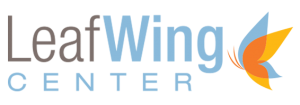ABLLS Assessment

ABLLS stands for Assessment of Basic Language and Learning Skills. This comprehensive assessment process is a test designed to determine language and critical learner skills in individuals specifically affected by autism and other developmental disabilities. The assessment captures a picture of the whole child and also looks in-depth into many domains.
Much of this assessment basis is accredited to and designed around the behavioral science work of Dr. B.F. Skinner from the 1950s. Expressive language skills are assessed using the verbal behavior method. This comes from the behavioral analysis of language developed by Skinner. The assessment provides a guide that identifies roadblocks that a child with autism may be struggling with to effectively communicate and learn new skills.
The Assessment of Basic Language and Learning Skills is used to measure areas like:
- Basic learner skills (Sections A-P)
- Academic Skills (Sections Q-T)
- Self-Help Skills (Sections U-X)
- Motor Skills (Sections Y-Z)
What is the age range for the ABLLS assessment?
The assessment is designed to be administered to primarily young children between the ages of two and six or some say between three and nine years of age. The ABLLS assessment tool can be a building block to developing Individualized Education Program (IEP) goals or treatment plans for use in a school setting.
Who can conduct an ABLLS assessment?
Teachers, Early Interventionists, Speech Language Pathologists, and Psychologists use the ABLLS assessment to help develop a treatment plan for a child with autism or learning differences.
This tool allows an evaluator to assess across 25 varied domains to get a thorough picture of a child’s functioning level, strengths, and deficits. Domains include self-help skills, gross motor skills, receptive skills, group instruction, etc.
What is the highest score on the ABLLS?
Each skill has a maximum score that varies from one skill to the next but the maximum score in any domain will either be a 2 or a 4. For any skill with a maximum score of 2, the learner may score 0, 1, or 2. For skills with a maximum score of 4, the child may score 0, 1, 2, 3, or 4. The maximum score does not mean anything for the skill itself. For example, a skill with a maximum score of 4 is not a more useful or better skill than a skill with a maximum score of 2.
Helpful Hint: When transferring the data to a graph, be sure that each assessment date has its own colors in order to track growth and regression. You are able to do it by hand, or electronically.
Does the ABLLS provide goals?
Using this tool with students and clients helps identify skills that are in need of intervention. The graph also gives a visual to professionals and families on what skills may be missing and if there are lacking skills within any domain. The data is easy to follow and makes it a wonderful tool to be used as a curriculum guide and to see which skills should be the focus of current instruction.
From an educator’s standpoint, there are ideas for teaching within the ABLLS and it is laid out so nicely, it is easy to use the data from assessments to write IEP goals and activities to work on within the classroom. It truly helps implement best practices as a teacher of using data to drive instruction.
The ABLLS materials take a lot of time and prep in the beginning, but once the materials and binders are created it becomes a great grab-and-go reference when planning a lesson which helps with productivity.
Let Leafwing Center help establish a treatment plan to help your child with autism get over the development hurdles. We are able to administer the ABLLS and create the treatment plan tailored to your child’s specific needs. Make sure to share the results with the child’s education team to help reinforce the foundation that has been established by the ABA therapist for your child with autism.
Additional Assessment Tools:
Functional Behavior Assessment (FBA)
Motivation Assessment Scale (MAS)
Reinforcer Assessment
Questions About Behavioral Function (QABF)
VB-MAPP Assessment



